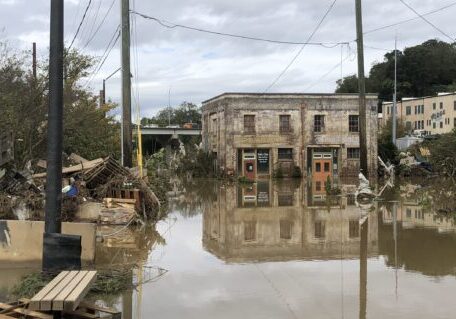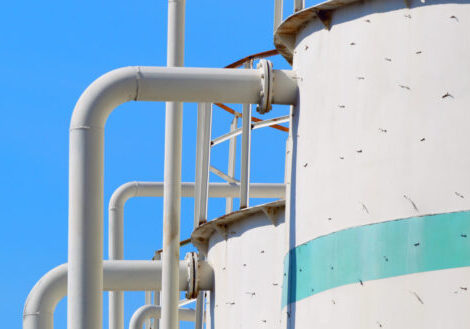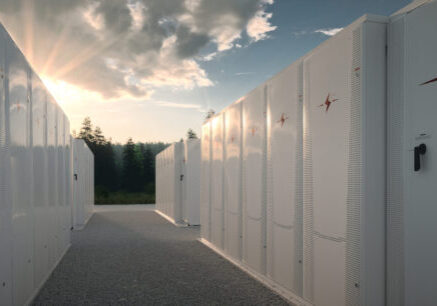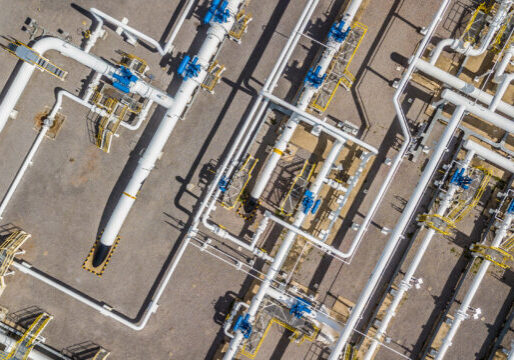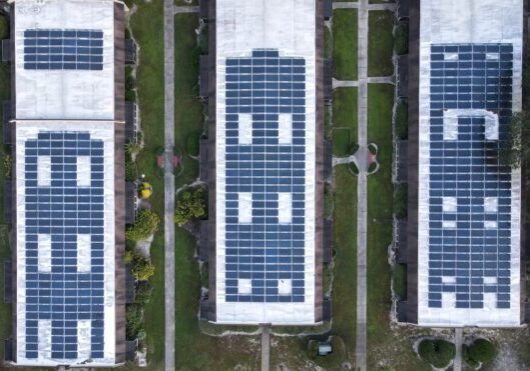October 26, 2023
Ignoring Climate Scientists and Environmental Justice Advocates, DOE Awards Billions to Fossil Fuel Hydrogen
By Abbe Ramanan
On October 13th, the U.S. Department of Energy announced the recipients of the Regional Clean Hydrogen Hubs (“H2Hubs”) funding. H2Hubs will award up to $7 billion to seven regional hydrogen hubs around the country. Disappointingly, more than half of the money from this massive federal investment will go towards Hubs producing hydrogen from fossil fuels with carbon capture and storage (CCS), also known as blue hydrogen. This massive investment ignores major concerns cited by climate scientists, environmental justice advocates, and clean energy experts.
One major concern identified by climate scientists is especially worrying: hydrogen gas leaked into the atmosphere is an indirect greenhouse gas that extends the lifetime of methane in the atmosphere, which means hydrogen has 35 times the climate warming impacts of CO2. A massive buildout of hydrogen infrastructure at this scale, without further research into how to safely and securely transport and store hydrogen, will almost certainly lead to significant short-term warming.
Although DOE has stated that each Hub’s projected benefits played a large role in determining awards, the H2Hubs process has suffered from a lack of transparency. Prospective awardees were not required to publish their proposals publicly, so while many of the Hubs promise some of how these community benefits will be generated – and how those benefits will outweigh the potential harms of each Hub – remain opaque. DOE is hosting a series of local engagement opportunities for each Hub, which will hopefully provide opportunities to cut through the hype and learn more about what these projects will mean for the communities impacted.
While we don’t know much about these Hubs, what we do know suggests that most of these projects will do more harm than good:
Appalachian Regional Clean Hydrogen Hub (ARCH2) — West Virginia, Ohio, Pennsylvania
The Hype: ARCH2 will produce blue hydrogen, with plans to bring job opportunities to workers in coal communities.
The Harm: CCS has been proven to be ineffective at reducing CO2 emissions, and does nothing to capture fugitive methane emissions, which cause significant short-term warming. Because of the increased fuel needed to power CCS technology, blue hydrogen produces up to 60 percent more damaging air pollutants than standalone hydrogen production. For former coal communities that have already suffered from decades of fossil fuel-related pollution, ARCH2 will likely deliver more of the same, while delaying needed climate action.
Alliance for Renewable Clean Hydrogen Energy Systems (ARCHES) — California
The Hype: ARCHES will produce hydrogen from renewable energy (green hydrogen), using it to decarbonize public transportation, heavy duty trucking, and port operations.
The Harm: Electrolysis, the process by which green hydrogen is produced, is very energy intensive. About 60 percent of the renewable energy that goes into the process is lost. That renewable energy could go directly towards decarbonizing the California grid, which has struggled to retire aging gas plants in environmental justice communities. Electrolysis also requires large amounts of purified water; coupled with climate change-induced droughts, this could lead to severe water scarcity.
HyVelocity H2Hub — Texas
The Hype: The HyVelocity H2Hub plans to produce both blue and green hydrogen in the existing fossil gas production region of the Gulf Coast.
The Harm: Communities in the Gulf region of Texas have already dealt with extensive environmental and public health damage at the hands of fossil fuel companies like ExxonMobil and Chevron, which are both major partners in the Hub. Along with all the other associated harms of blue hydrogen production, this $1.2 billion stamp of approval from DOE will only help entrench these polluting players in the region. In fact, Exxon just finalized its second-biggest takeover of another fossil fuel producer in two decades, a move largely seen as a long-term bet on fossil fuels.
Heartland Hydrogen Hub — Minnesota, North Dakota, South Dakota
The Hype: The Heartland Hub will produce blue hydrogen, which will go towards ammonia production and electric generation.
The Harm: While there are plenty of harms associated with producing blue hydrogen, electricity generation is one of the most wasteful and potentially harmful uses of hydrogen. If hydrogen is combusted, such as in a power plant for electricity generation, it produces six times as much of the harmful air pollutant nitrogen oxide (NOx) as natural gas. Converting hydrogen to ammonia, which the Hub also intends to do, is also an energy intensive process. Given that this Hub will be utilizing large amounts of fossil gas to meet these high energy demands, without capturing any of the upstream fugitive methane emissions, this Hub could have a serious global warming impact.
Mid-Atlantic Clean Hydrogen Hub (MACH2) — Pennsylvania, Delaware, New Jersey
The Hype: MACH2 will produce both green and pink (nuclear) hydrogen, while repurposing existing oil infrastructure and rights of way.
The Harm: Little data exists on how hydrogen behaves in existing oil infrastructure, but what is known suggests that repurposing infrastructure such as pipelines could be very dangerous. When hydrogen is run through steel pipelines at high pressure, it diffuses through the alloy and creates cracks, a process known as embrittlement. Hydrogen is also extremely prone to leakage due to its small molecular size (in fact, equipment sensitive enough to capture these leaks does not currently exist), and its explosions can be four times as dangerous as natural gas. Leaked hydrogen is also a secondary greenhouse gas that contributes to increased global warming.
Midwest Alliance for Clean Hydrogen (MachH2) — Illinois, Indiana, Michigan
The Hype: MachH2 will produce blue, green, and pink hydrogen that will be put towards steel and glass production, power generation, refining, heavy-duty transportation, and aviation fuel.
The Harm: Carbon capture rivals hydrogen for dubious benefits and feasibility. All carbon, even if it’s destined for geologic sequestration, must be transported from the point of capture, which requires the build-out of CO2 pipelines. This additional infrastructure build-out could have serious consequences for nearby communities. In 2020, the town of Satartia, Mississippi faced mass poisoning from a CO2 pipeline explosion. Existing pipeline regulations are not designed for CO2 pipelines, and neither are pipeline safety protocols, making explosions particularly dangerous.
Pacific Northwest Hydrogen Hub (PNW H2) — Washington, Oregon, Montana
The Hype: PNW H2 will produce green hydrogen and will invest in joint labor-management/state-registered apprenticeship programs.
The Harm: This Hub presents the best use case: hydrogen produced will be green, and it will be run through fuel cells, which is the only production method that doesn’t generate additional air pollutants. However, even this best use case must consider the potential diversion of renewable energy from directly decarbonizing the grid and will require the buildout of expensive infrastructure.
It is extremely frustrating that despite the huge body of evidence on hydrogen’s shortcomings, not to mention the destruction it will wreak on environmental justice communities, the Biden Administration continues to prop up the greenwashed narrative that hydrogen is a key to decarbonization. There is hope that some of the harm these Hubs will cause can be mitigated – or at least, that the benefits they promise, like good-paying jobs, are realized – through interventions in the award negotiation process, which is just beginning. Advocates should engage early and often throughout DOE’s negotiation and implementation process, but it is disappointing that once again, the onus is on communities to protect themselves from the harms of a false fossil fuel solution.





